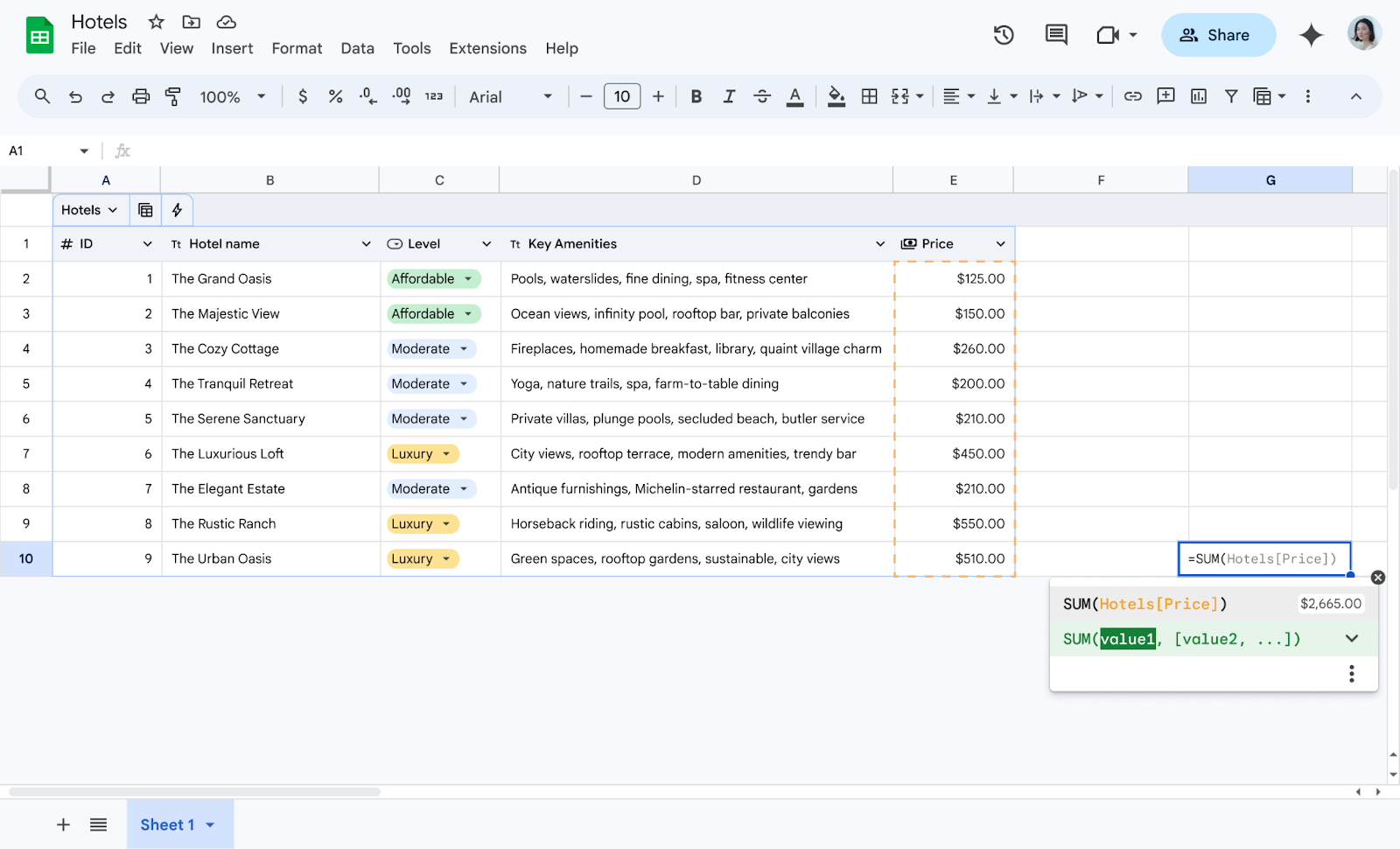November 19, 2024
Table reference improvements in Google Sheets
What’s changing
- Improved table reference availability, which allows users to reference the items below across both single (e.g., =Table2[[#ALL],[Column 1]]) and multiple columns (e.g., =Table2[[#ALL],[Column 1]:[Column 2]] ):
- Full table columns, including column headers, data, and footers (#ALL)
- Table headers (#HEADERS)
- Table footers (#TOTALS)
- Table data, excluding headers and footers (#DATA)
- Formula suggestions, which help you identify formulas that could be more robust. For example, if a user types a working formula that overlaps with a table range, a table reference suggestion will show.
- Formula corrections for table references, which show a formula correction with a proper table reference when a formula is written incorrectly.
Getting started
- Admins: There is no admin control for this feature.
- End users: Visit the Help Center to learn more about using table references in Google Sheets.
Rollout pace
- Rapid Release domains: Extended rollout (potentially longer than 15 days for feature visibility) starting on November 19, 2024
- Scheduled Release domains: Gradual rollout (up to 15 days for feature visibility) starting on December 10, 2024
Availability
- Available to all Google Workspace customers, Google Workspace Individual subscribers, and users with personal Google accounts



